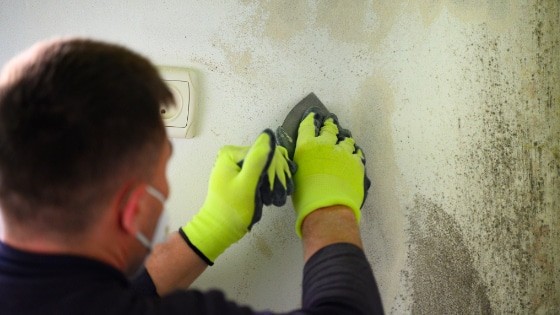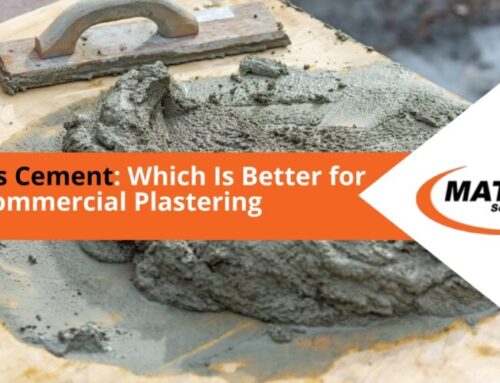In the aftermath of a flood, the immediate concern for commercial building owners is understandably the clean up and flood damage restoration process. The sight of waterlogged spaces and damaged infrastructure paints a stark picture of the havoc wrought by the deluge. But as the waters recede and the initial clean up concludes, there’s a silent, lingering threat that often goes unnoticed: mould. In the Australian climate, where humidity can provide the perfect breeding ground, mould growth after flooding is a persistent issue. So, the battle against flooding doesn’t stop at clean up or restoration; it extends into the long-term prevention of mould growth. With this quick guide, we’ll help you prevent persistent mould growth after flooding.
How to Stop Mould from Growing After Flooding: Battling the Invisible Enemy
When it comes to mould, prevention is key. Here are some crucial steps to take immediately after flooding or water damage to halt the growth of this unwelcome guest:
- Prioritise Swift Water Extraction: The clock is ticking from the moment flooding occurs. Ensure water is extracted promptly from your commercial space to limit the moisture available for mould to thrive. High-powered water extraction equipment can be invaluable in this effort.
- Perform Thorough Drying: Want to prevent mould growth after water damage? Proper drying is essential. Use commercial-grade dehumidifiers and fans to dry out affected areas, including walls, floors and ceilings. Don’t forget to pay special attention to hidden corners & spaces like wall cavities and underfloor areas.
- Remove Damaged Materials: Get rid of any material that can’t be thoroughly dried within 48 hours, such as soaked drywall or insulation. That’s because mould can start breeding in these materials even after they appear dry.
- Disinfect and Clean: Clean all surfaces and belongings that came into contact with floodwater with an appropriate disinfectant. This step is crucial, as it helps eliminate mould spores that may have already settled.
- Ensure Ventilation: Maintain good airflow in affected areas to prevent moisture build-up. Whether the flood damage is your shop or warehouse, you can utilise open windows, fans or dehumidifiers to aid in air circulation.
- Seal Vulnerable Areas: After flood clean up, look out for significant cracks or gaps in your building’s structure and seal them to prevent moisture infiltration. Ensure that roofs and foundations are also properly sealed to keep water out.
- Perform Regular Inspections: Weeks or months after flooding or water damage, conduct regular inspections of your building for signs of mould or moisture build-up. That way, you can keep mould issues at bay and maintain a healthy environment for your staff, clients and guests.
When Do You Need Expert Help? Recognising the Signs of Mould Growth
Despite your best efforts, mould can be persistent and elusive. Here are some signs that indicate it’s time to bring in the experts:
- Visible Mould Growth: Have you noticed visible mould growth on surfaces like walls, ceilings or floors? It’s high time to seek professional help. Mould can spread rapidly, and visible growth is often just the tip of the iceberg.
- Persistent Odours: Musty or earthy odours can be a sign of hidden mould growth. If these odours persist despite your efforts to clean and ventilate, it’s time for a thorough inspection and commercial mould removal service.
- Health Issues: Do your employees or clients report mould-related health issues such as respiratory problems, allergies or persistent coughing that seem to be related to the time they spent in the building? Call a mould removal specialist to confirm your suspicions and perform the necessary service.
- Structural Damage: Mould can compromise the structural integrity of a commercial building over time. So, consider mould issues if you notice any sign of structural damage, such as weakened walls or ceilings, after flooding or any water damage in your commercial building.
Contact Mathiou Services for Commercial Mould Removal
At Mathiou Services, we understand the unique challenges of mould growth after flooding. So, we’re here to help resolve the issue before it gets out of hand. Our team performs comprehensive commercial mould removal and wall replastering services across Australia. Reach out to us the moment you suspect mould issues in your commercial building. You can identify mould by its appearance—it can look like black spots or green, white or blue stains on walls, floors & other surfaces. Also, watch out for other signs of mould growth issues we’ve discussed earlier.
Don’t let persistent mould growth jeopardise the safety of your commercial space. Give Mathiou Services a call today.









